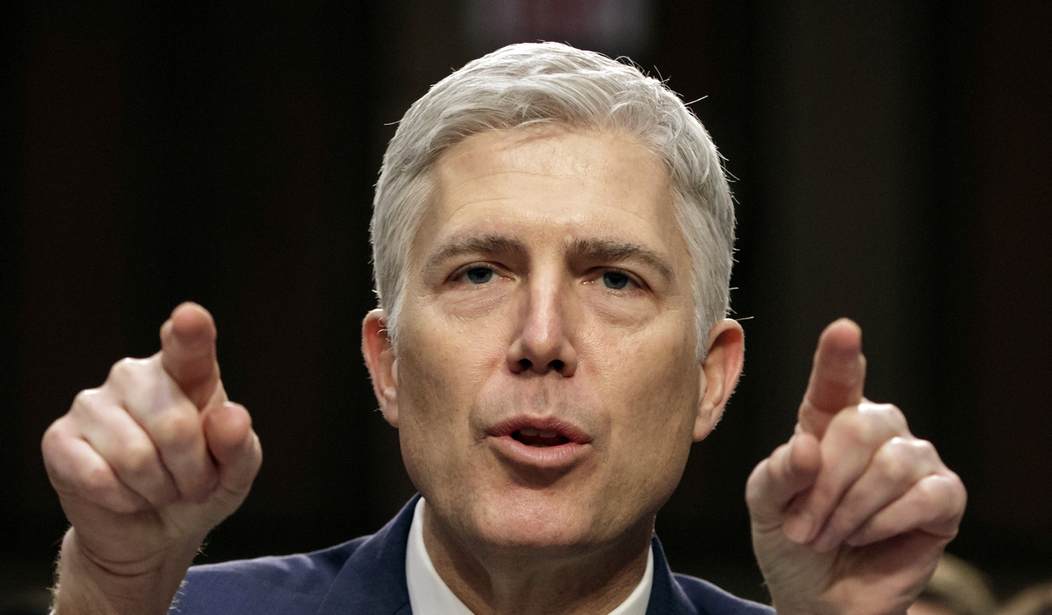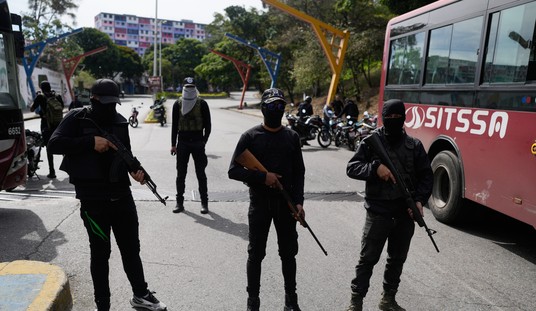Thursday, the US Supreme Court dismissed an effort by Arizona to force the Biden White House to retain emergency provisions of Title 42, US Code, that permitted the expulsion of illegal immigrants without allowing them to apply for asylum. President Trump put The provisions into effect as a measure to deal with the COVID pandemic. This action brings down the curtain on the frightening assault on civil liberties carried out under the cover of protecting us from a virus.
The question at hand was whether states could sue the federal government to force it to retain the policy in place. However, as the Biden White House ended the COVID National Emergency on May 11, the Supreme Court’s order returned the case to the US Court of Appeals for the DC Circuit with directions to dismiss it as moot.
The path that led to today was a long, convoluted, and ugly. This is the history provided by the National Association of Attorneys General.
The intervention question arises in the context of litigation challenging the Title 42 policy and the Biden’s administration’s efforts to terminate it. In January 2021, a group of asylum-seeking families filed the underlying challenge to the policy in federal district court in D.C.
This was a quintessential “sue and settle” case where the federal government appears to have recruited plaintiffs to sue to end Title 42 immigration restrictions. If states were not allowed to intervene in the case, then the Department of Homeland Security completely controlled the outcome.
The district court preliminarily enjoined the policy, but was partially reversed by the D.C. Circuit, which also denied Texas’s request to intervene on appeal. Soon after, in April 2022, the CDC determined that the Title 42 policy was no longer necessary to protect the public health and issued an order terminating it, effective May 23, 2022. A federal district court in Louisiana, however, entered a preliminary nationwide injunction blocking that termination at the request of several States (including the Petitioning States). Louisiana v. CDC, No. 22-cv-885, 2022 WL 1604901 (W.D. La. May 20, 2022). An appeal from that injunction is pending before the Fifth Circuit. Then, on November 15, 2022, the district court in the underlying D.C. case entered summary judgment for the plaintiffs, vacating and setting aside the Title 42 policy. The district court temporarily stayed its order to allow the federal government time to transition its immigration processing system. The federal government then informed the Louisiana district court that the Title 42 policy would be vacated upon the stay’s expiration, at which point there would be “no legal authority for the government to continue to enforce the Title 42 policy.”
Six days after entry of the district court’s judgment, the Petitioning States filed a motion to intervene. But before that request was resolved, the federal government filed a notice stating its intent to appeal and to ask the D.C. Circuit to hold the appeal in abeyance pending the Fifth Circuit’s decision in Louisiana and CDC’s forthcoming notice-and-comment rulemaking to replace the Title 42 policy. Two days after the government filed a notice of appeal with the D.C. Circuit, the Petitioning States requested permission to intervene in the appeal. They also sought, but were denied, a stay pending appeal. The D.C. Circuit denied the intervention request, reasoning that it came too late: the Petitioning States had a “clear opportunity” to seek intervention much earlier, given that they “kn[ew] that their interests in the defense and perpetuation of the Title 42 policy had already diverged or likely would diverge from those of the federal government.” Indeed, Texas (one of the movants) had recognized this divergence when it sought to intervene during the first appeal, and the Petitioning States were alerted to the divergence during the Louisiana litigation.
In seeking review of that ruling, the Petitioning States submit, at the threshold, that they have standing to challenge the Title 42 policy’s termination because it will trigger an increase in border crossings that will cause them economic harm. They submit that the federal government will not adequately represent their interests because, in their view, the government colluded with the plaintiffs to obtain the termination of the Title 42 policy and thus will not vigorously defend it on appeal. The Petitioning States, moreover, contend that the D.C. Circuit incorrectly denied their intervention motion on timeliness grounds. The dispositive point, they say, is that they moved to intervene in the appeal two days after the notice to appeal was filed. They maintain that there was no need to seek intervention earlier in the proceedings because the federal government was previously appropriately defending the Title 42 policy; any such request, they add, would have been futile, as shown by Texas’s unsuccessful attempt to intervene. And granting intervention, they assert, will cause the federal government and the plaintiffs no prejudice, as it will facilitate a resolution of the underlying case on its merits.
Justice Neil Gorsuch wrote the unanimous opinion driving a stake through the shriveled, odiferous heart of the last legal vestige of our shameful response to COVID. First, he lays out the history of the Title 42 restrictions and how those restrictions were used by various parties to drag the federal courts into the fray. I encourage you to read it. Then he goes on to lambaste the courts and legislatures for their performance.
I recite all this tortured procedural history not because I think the Court’s decision today is wrong. Nearly five months ago, I argued that the Court erred when it granted expedited review and issued a stay. As I explained at the time, I do not discount the States’ concerns about what is happening at the border, but “the current border crisis is not a COVID crisis.” And the Court took a serious misstep when it effectively allowed nonparties to this case to manipulate our docket to prolong an emergency decree designed for one crisis in order to address an entirely different one. Today’s dismissal goes some way to correcting that error.
I lay out the history of this case only because it is so typical. Not just as an illustration of the quandaries that can follow when district courts award nationwide relief, a problem I have written about before. Even more importantly, the history of this case illustrates the disruption we have experienced over the last three years in how our laws are made and our freedoms observed.
Since March 2020, we may have experienced the greatest intrusions on civil liberties in the peacetime history of this country. Executive officials across the country issued emergency decrees on a breathtaking scale. Governors and local leaders imposed lockdown orders forcing people to remain in their homes.
They shuttered businesses and schools public and private. They closed churches even as they allowed casinos and other favored businesses to carry on. They threatened violators not just with civil penalties but with criminal sanctions too.
They surveilled church parking lots, recorded license plates, and issued notices warning that attendance at even outdoor services satisfying all state social-distancing and hygiene requirements could amount to criminal conduct. They divided cities and neighborhoods into color-coded zones, forced individuals to fight for their freedoms in court on emergency timetables, and then changed their color-coded schemes when defeat in court seemed imminent.
Federal executive officials entered the act too. Not just with emergency immigration decrees. They deployed a public-health agency to regulate landlord-tenant relations nationwide.They used a workplace-safety agency to issue a vaccination mandate for most working Americans.
They threatened to fire noncompliant employees, and warned that service members who refused to vaccinate might face dishonorable discharge and confinement. Along the way, it seems federal officials may have pressured social-media companies to suppress information about pandemic policies with which they disagreed.
While executive officials issued new emergency decrees at a furious pace, state legislatures and Congress—the bodies normally responsible for adopting our laws—too often fell silent. Courts bound to protect our liberties addressed a few—but hardly all—of the intrusions upon them. In some cases, like this one, courts even allowed themselves to be used to perpetuate emergency public-health decrees for collateral purposes, itself a form of emergency-lawmaking-by-litigation.
Doubtless, many lessons can be learned from this chapter in our history, and hopefully serious efforts will be made to study it. One lesson might be this: Fear and the desire for safety are powerful forces. They can lead to a clamor for action—almost any action—as long as someone does something to address a perceived threat.
A leader or an expert who claims he can fix everything, if only we do exactly as he says, can prove an irresistible force. We do not need to confront a bayonet, we need only a nudge, before we willingly abandon the nicety of requiring laws to be adopted by our legislative representatives and accept rule by decree. Along the way, we will accede to the loss of many cherished civil liberties—the right to worship freely, to debate public policy without censorship, to gather with friends and family, or simply to leave our homes.
We may even cheer on those who ask us to disregard our normal lawmaking processes and forfeit our personal freedoms. Of course, this is no new story. Even the ancients warned that democracies can degenerate toward autocracy in the face of fear.
But maybe we have learned another lesson too. The concentration of power in the hands of so few may be efficient and sometimes popular. But it does not tend toward sound government. However wise one person or his advisors may be, that is no substitute for the wisdom of the whole of the American people that can be tapped in the legislative process.
Decisions produced by those who indulge no criticism are rarely as good as those produced after robust and uncensored debate. Decisions announced on the fly are rarely as wise as those that come after careful deliberation. Decisions made by a few often yield unintended consequences that may be avoided when more are consulted. Autocracies have always suffered these defects. Maybe, hopefully, we have relearned these lessons too.
In the 1970s, Congress studied the use of emergency decrees. It observed that they can allow executive authori- ties to tap into extraordinary powers. Congress also ob- served that emergency decrees have a habit of long outliving the crises that generate them; some federal emergency proclamations, Congress noted, had remained in effect for years or decades after the emergency in question had passed.
At the same time, Congress recognized that quick unilateral executive action is sometimes necessary and permitted in our constitutional order. In an effort to balance these considerations and ensure a more normal op- eration of our laws and a firmer protection of our liberties, Congress adopted a number of new guardrails in the National Emergencies Act.
Despite that law, the number of declared emergencies has only grown in the ensuing years. And it is hard not to wonder whether, after nearly a half century and in light of our Nation’s recent experience, another look is warranted. It is hard not to wonder, too, whether state legislatures might profitably reexamine the proper scope of emergency executive powers at the state level. At the very least, one can hope that the Judiciary will not soon again allow itself to be part of the problem by permitting litigants to manipulate our docket to perpetuate a decree designed for one emergency to address another. Make no mistake—decisive executive action is sometimes necessary and appropriate. But if emergency decrees promise to solve some problems, they threaten to generate others. And rule by indefinite emergency edict risks leaving all of us with a shell of a democracy and civil liberties just as hollow.
This is some pretty tough rhetoric, and some of it is directed at his colleagues, particularly Chief Justice John Roberts. When COVID restrictions cases began arriving at the Supreme Court in May 2020, Gorsuch, Alito, Thomas, and Kavanaugh resolutely opposed them. Chief Justice Robert usually sided with the liberal bloc because “an unelected judiciary lacks the background, competence, and expertise to assess public health and is not accountable to the people.”
Gorsuch was also one of the dissenters in the Calvary Chapel Dayton Valley vs. Sisolak decision that challenged Nevada’s directive limiting access to churches.
This is a simple case. Under the Governor’s edict, a 10-screen “multiplex” may host 500 moviegoers at any time. A casino, too, may cater to hundreds at once, with perhaps six people huddled at each craps table here and a similar number gathered around every roulette wheel there. Large numbers and close quarters are fine in such places. But churches, synagogues, and mosques are banned from admitting more than 50 worshippers—no matter how large the building, how distant the individuals, how many wear face masks, no matter the precautions at all. In Nevada, it seems, it is better to be in entertainment than religion. Maybe that is nothing new. But the First Amendment prohibits such obvious discrimination against the exercise of religion. The world we inhabit today, with a pandemic upon us, poses unusual challenges. But there is no world in which the Constitution permits Nevada to favor Caesars Palace over Calvary Chapel.
It is sort of unfortunate this case ended with such a whimper, resembling an elephant giving birth to an field mouse. I think states, as sovereign entities should have the right to challenge any and all federal regulations that have an impact of how the state government operates. But Gorsuch has this right. The Title 42 restrictions have long since run their course and the were being used as a proxy in the fight over the Biden White House’s lawless immigration policy. At best they were questionable. They were probably unconstitutional when President Trump put them into force. It seems like at least one justice has learned the right lesson from what we went through.
Opinion in Arizona vs. Mayorkas
Arizona vs. Mayorkas by streiff at redstate on Scribd













Join the conversation as a VIP Member